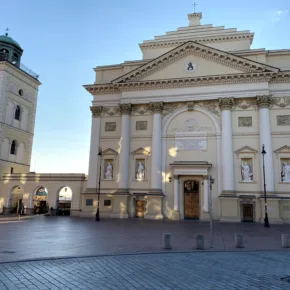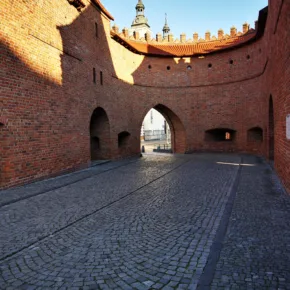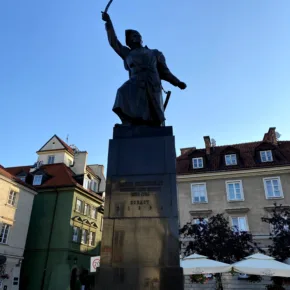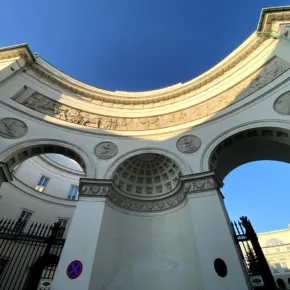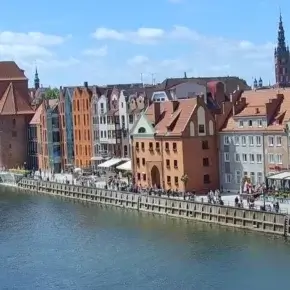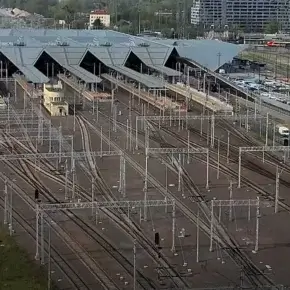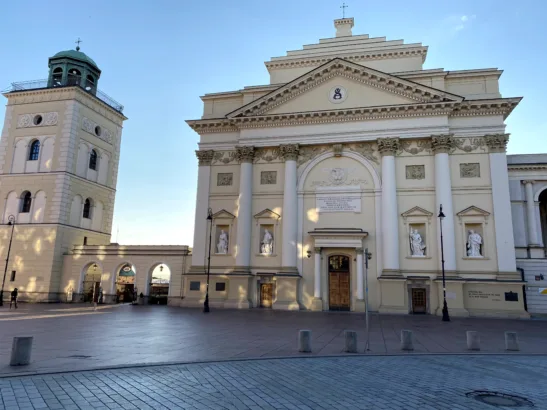
- Type: interesting-place
- GPS: 52.2460417, 21.0112224
The church is located in the very center of Warsaw, made in Warsaw classicism. The church was rebuilt many times and acquired its final appearance only by 1788. The church has good acoustics, so organ music concerts are often held here. You can visit the bell tower, which serves as an observation deck. The locals have a legend that if you marry in the church of St. Anne, it will certainly be happy.
History
St. Anne’s Church in Warsaw was erected in 1454 near the Bernardine monastery founded by Duchess Anna of Mazovia. The church was built in the Gothic style and consecrated by Bishop Andrzej Bninski on December 4, 1454. In 1507, the church and monastery were destroyed by fire. However, they were rebuilt under the efforts of Guardian Antonius of Beča and Jan of Komorow. In 1515, the church and monastery were again destroyed in another fire. In 1533 the church was rebuilt thanks to the financial help of Anna Radziwill, Beata Temczynska and the Bishop of Poznań, Jan Lubranski.
The suburb of Warsaw, where the church and monastery were located, became known as the Kraków suburb, because the first Bernardine monastery in Poland was founded in Kraków, and the monks from it established this monastery in Warsaw. On February 20, 1578, in a ceremony in the church, Margrave Georg Friedrich von Ansbach was proclaimed regent of Prussia by King Stefan Batory. On October 22, 1586, Pope Sixtus V established an archbishopric at the church. In 1578 Queen Anna Jagiellonka built a bell tower and donated bells to the church. On November 16, 1611, in the narthex of the church, the Margrave of Brandenburg, Elector John Sigismund von Hohenzollern, was proclaimed regent of Prussia by King Sigismund III Vasa.
The church was not destroyed during the Swedish invasion, but was turned into a fortress by the Protestants. The church was damaged during the siege of Warsaw by the army of Transylvanian Prince György II Rakoczy in 1657.
In 1660 the monastery was restored with the participation of the castellan Jan Wielkopolski Sr. In 1663, the restoration of the church, designed by architects Giovanni Gisleni and Tito Burattini, began and was completed in 1670. An organ by Antonius of Glogova and Clement of Sierpska was installed in the church. In 1676, the Warsaw General Seminary or Bernardine Seminary was opened at the monastery, which received the first class degree, the highest degree for an educational institution in the kingdom. In 1701 a garden was laid out at the monastery.
In the middle of the XVIII century, the facade of the church was reconstructed in the Rococo style according to the project of architect Jakub Fontana, decorating it with two filigree bell towers. The interior of the church was decorated with paintings by monk Valenta Zhebrowski depicting scenes from the “Life of St. Anna”. In 1786-1788, Stanislaw Kostka Potocki, with the participation of King Stanislaw August Poniatowski and the townsman Józef Kwiecinski, raised funds to reconstruct the facade of the church, which was restored by architect Piotr Aigner in the Classicist style. At the same time, the chapel of Our Lady of Sokal was built in the church on Józef Kwieciński’s funds.
During the Warsaw Uprising of 1794, on the square in front of the church, the rebels hanged Bishop Józef Kossakowski, accusing him of treason in favor of Russia. After the establishment of the Kingdom of Poland within the Russian Empire, the monastery actually ceased to exist.
The church was not badly damaged during the bombing of Warsaw in 1939 at the very beginning of World War II. The church burned down during the Warsaw Uprising in 1944, but was completely rebuilt during the reconstruction of 1946-1962.
The church is located in close proximity to four major institutions of higher education in Warsaw – the University of Warsaw, the Academy of Fine Arts, the Frideric Chopin University of Music and the Theater Academy. For this reason, its rector has been the university chaplain since 1928.
On June 3, 1979, Pope John Paul II made his first pilgrimage here and met with Polish youth. A plaque commemorating this event is located at the entrance to the church.

